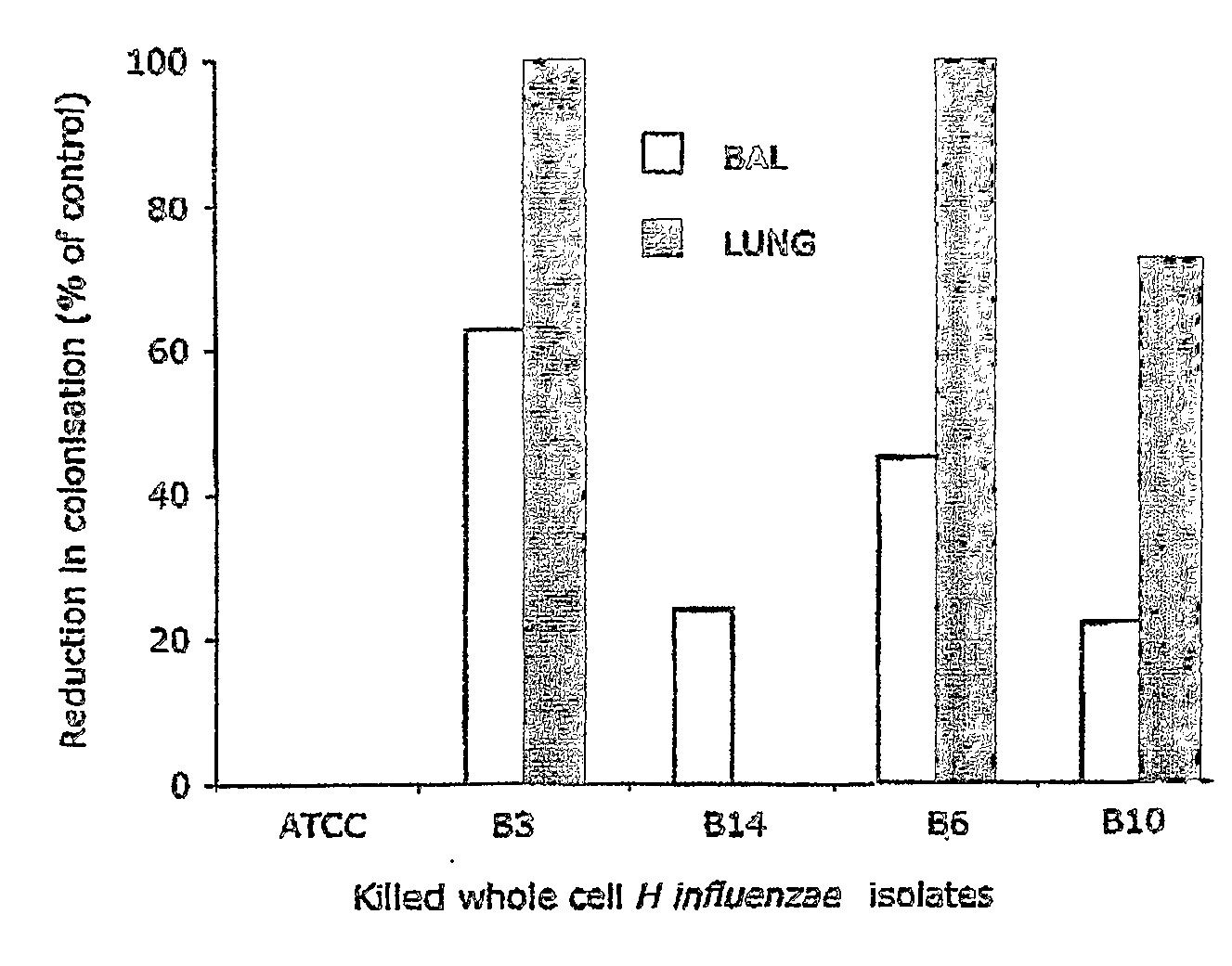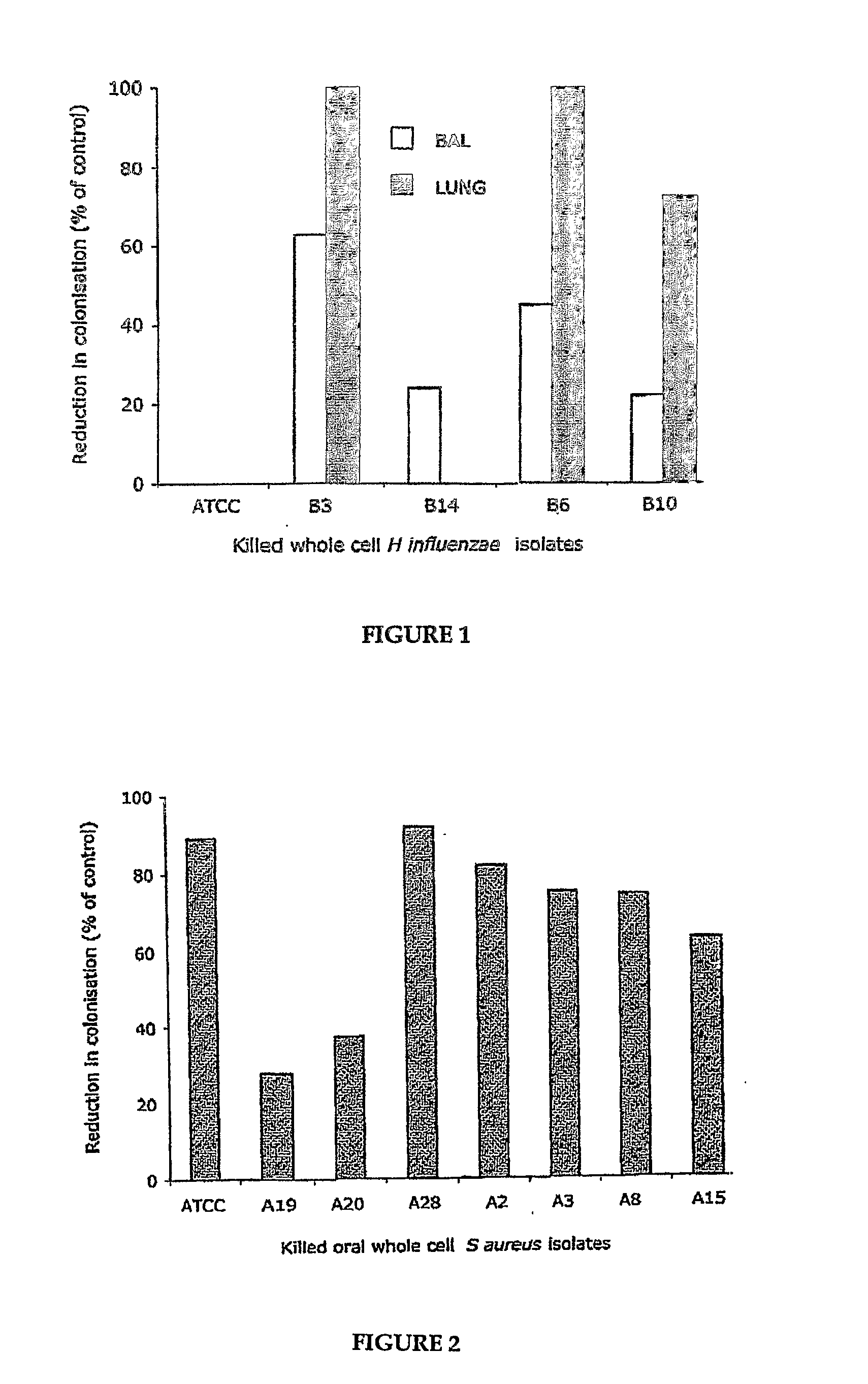Oral Killed Vaccines and Method for Providing Same
a vaccine and oral technology, applied in the field of oral killing vaccines and the field of providing same, to achieve the effect of optimizing the degree of activation of the common mucosal system
- Summary
- Abstract
- Description
- Claims
- Application Information
AI Technical Summary
Benefits of technology
Problems solved by technology
Method used
Image
Examples
example 1
Variation in T-lymphocyte activation following oral immunisation with killed Ps.aeruginosa oral vaccine
[0056]A study was conducted to demonstrate the variability in the capacity of recipient T cells to recognise and respond to an unselected isolate of killed bacteria. A cohort of nine human subjects with bronchiectasis were given two courses of killed oral Ps.aeruginosa (Ps.a) vaccine. Each course comprised administering two tables (each tablet containing 1011 killed bacteria) per day for three days, with the second course commencing on day 28. The Ps.aerugiiiosa isolate used was not selected other than being shown to be capable of activating the common mucosal system in an animal model.
[0057]Peripheral blood mononuclear cells were used as a source of antigen-primed T cells and were isolated from heparinized blood on a Ficoll / Paque density gradient. After centrifugation at 200 g for 20 mins at 4° C., the cells were collected from the plasma:ficoll interface, washed twice with PBS pH...
example 2
Selection of an optimal isolate for eliciting the release of cytokines
[0062]S. aureus and non-typable H. influenzae isolates obtained from normal human subjects were killed by treatment with 2% paraformaldehyde in phosphate buffered saline (PBS). After incubation at room temperature for 1 hr, the treated bacteria were exhaustively washed in PBS and then tested for viability by culturing on mannitol salt agar or horse blood agar plates. The killed bacteria were adjusted to 2×109 cfu / mL by interpolation from a standard regression curve for Absorbance versus CFU. For use in culture stimulation, the bacteria from each isolate were adjusted to a final concentration of 2×108 CFU per ml in serum-free AIM-V medium containing penicillin (100U / mL), streptomycin (100 μg / ml) and 2-mercaptoethanol (2-ME, 5×10−5 M). For S. aureus isolates, groups of male BALB / c mice (n=5) were given 5×109 killed whole cell bacteria by intragastric administration every 2 days per week for 2 weeks before challenge ...
example 3
Selection of an optimal isolate of bacteria as an immunostimulator to reduce mucosal colonisation.
[0068]Two mouse mucosal colonisation models were used to determine (1) the reduction in colonisation of S aureus in the nasal cavities and (2) the reduction in colonisation of non-typable H. influenzae in the lungs following challenge with live bacteria.
[0069]In model 1, 8 week old male SPF BALB / c mice (n=5) were given killed whole cell S. aureus bacteria (5×109 per mouse) in 300 ul PBS by the intragastric route every 2 days per week for 2 weeks. Control mice received PBS alone. Paraformaldehyde—killed bacteria from isolates A2, A28, A3, A15, A19 and A20 were tested including an ATCC strain as a reference (ATCC 49247), respectively. One day after the final dose, mice were challenged with live S. aureus by administering 10 μl of 5×109 bacteria / ml into each nostril. At 24-48 hrs after challenge, mice were sacrificed and the nasal tissues excised. The tissues were homogenised in PBS and th...
PUM
| Property | Measurement | Unit |
|---|---|---|
| pH | aaaaa | aaaaa |
| total volume | aaaaa | aaaaa |
| concentration | aaaaa | aaaaa |
Abstract
Description
Claims
Application Information
 Login to View More
Login to View More - R&D
- Intellectual Property
- Life Sciences
- Materials
- Tech Scout
- Unparalleled Data Quality
- Higher Quality Content
- 60% Fewer Hallucinations
Browse by: Latest US Patents, China's latest patents, Technical Efficacy Thesaurus, Application Domain, Technology Topic, Popular Technical Reports.
© 2025 PatSnap. All rights reserved.Legal|Privacy policy|Modern Slavery Act Transparency Statement|Sitemap|About US| Contact US: help@patsnap.com


